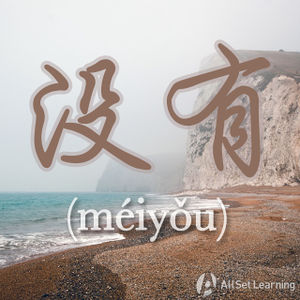Difference between revisions of "Basic comparisons with "meiyou""
ViktorMugli (talk | contribs) |
Yangrenjun (talk | contribs) |
||
| Line 1: | Line 1: | ||
| + | {{Grammar Box}} | ||
== Basic patterns == | == Basic patterns == | ||
| Line 49: | Line 50: | ||
[[Category:A2 grammar points]] | [[Category:A2 grammar points]] | ||
[[Category:Comparison]] | [[Category:Comparison]] | ||
| + | {{Basic Grammar|没有|A2|N1 + 没有 + N2 + Adj|你 <em>没有</em> 他 胖。|grammar point|ASGEAH5M}} | ||
| + | {{Similar|[Basic comparisons with "bi"}} | ||
| + | {{Similar|Basic comparisons with "bu bi"}} | ||
| + | {{Similar|Comparisons with "buru"}} | ||
Revision as of 04:59, 13 June 2012
-
Level
-
Similar to
-
Used for
-
Keywords
Basic patterns
As well as with 比, you can also use 没有 (méiyǒu) to make basic comparisons. You could think of 没有 as the opposite of 比 - it works in the same way, but rather than expressing "more... than..." it expresses "not as... as...":
Noun 1 + 没有 + Noun 2 + Adjective
In this structure, the noun that's placed first is less "adjective" than the second noun (hence 没有 being like 比 in reverse). So in the sentence:
- 小张 没有 小李 高。 (Xiao Zhang is not as tall as Xiao Li.)
小李 is taller. The same situation could be described as:
- 小李 没有 小张 矮。 (Xiao Li is not as short as Xiao Zhang.)
Examples
- 你 没有 我 胖。
- 他们 没有 我们 酷。
- 这 辆 车 没有 那 辆 快。
See also
Sources and further reading
Books
- Chinese: An Essential Grammar, Second Edition (pp. 54-5) →buy
- New Practical Chinese Reader 3 (新实用汉语课本3) (pp. 33-4) →buy



